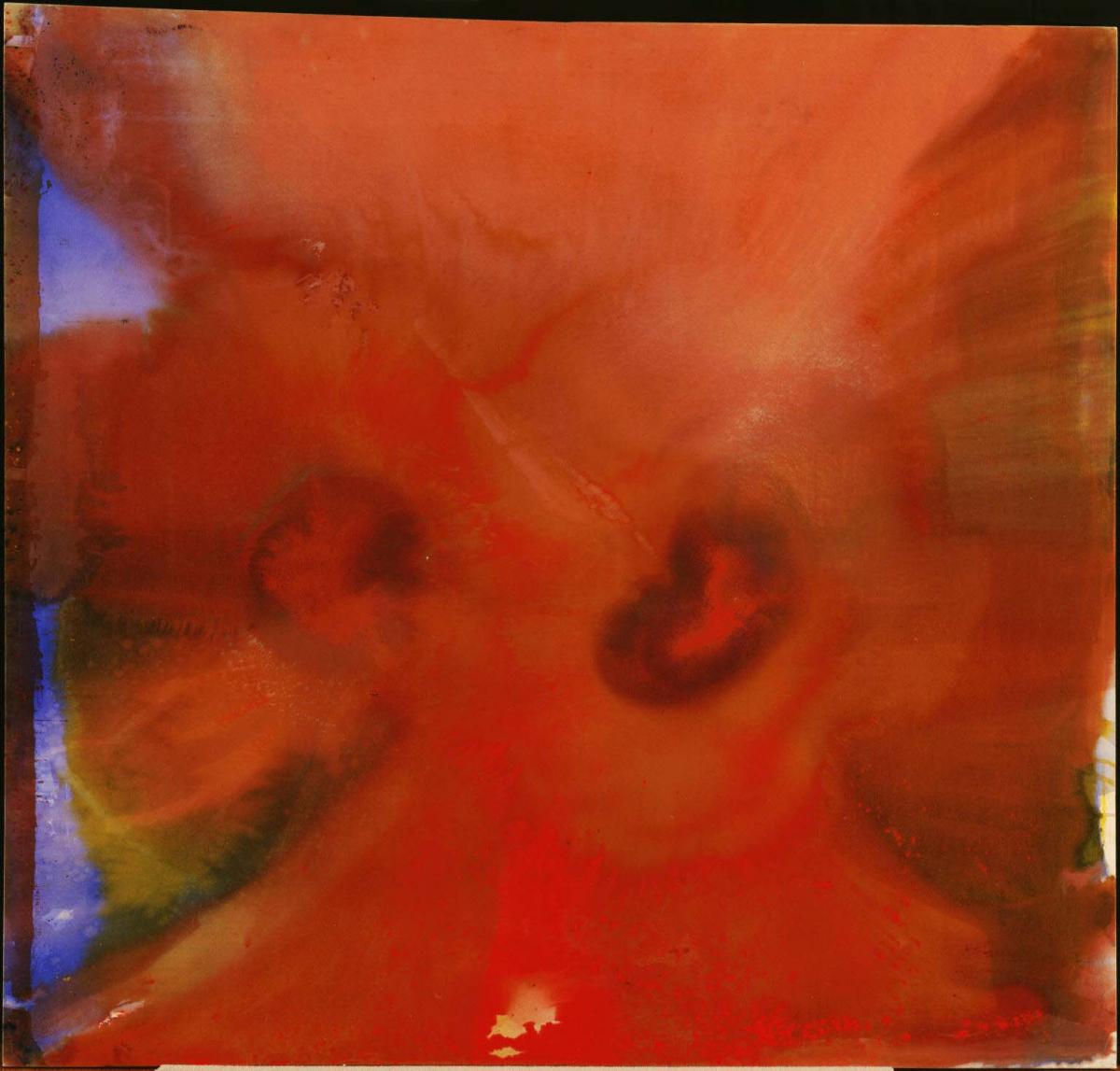Red Petals
Sam Gilliam ( 1967 )

Red Petals is among the first paintings in which Gilliam poured paint onto an unprimed and unstretched canvas, folded the canvas onto itself, suspended it, and left the paint to settle overnight. The next day he sponged, daubed, splattered, folded, rolled, and then restretched the canvas. Gilliam describes this delicate balance between improvisation and discipline as “a sort of accident, a part that I controlled, and then a part that I didn’t control, a part that I set into motion.” The emotional intensity and expressionistic force of Red Petals partly derives from this careful manipulation and the tension between chance and control.
As a leading artist of the Color Field movement, Gilliam used color as the ultimate form of expression. In Red Petals, cadmium red and bright coral explode off the canvas. This painting was the first where Gilliam did not clearly define his edges with masking tape; the red bleeds into the violet-black, green, yellow and cobalt blue, pulsating with luminosity.
Although Gilliam had experimented with spontaneous methods, he now trusted gravity to shape biomorphic rather than geometric forms. Gilliam observed that “the natural environment, wind, and the like, gives life to cloth. Cloth has no particular characteristic unless you give life to it.” Red Petals, although ultimately mounted on a stretcher, represents Gilliam’s first step toward this revolutionary reinterpretation of the role of canvas: it becomes a medium, not the support, and therefore is as important as acrylic or oil.
According to Gilliam, abstraction gives him a freedom—denied to the realistic painter—to communicate with the viewer by tapping into emotions at a deep, visceral level. He remarked, “Petals is…when I first really felt that I was getting somewhere on my own; beginning to see and unfold … and not to imitate all the paintings I had seen in Washington.”